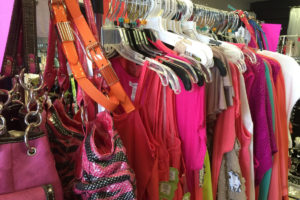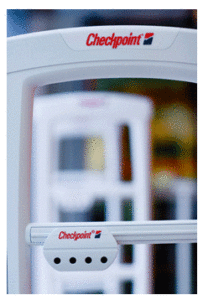 “It’s INVENTORY time let’s go have FUN!” There’s a phrase you will never hear. Let’s face it anyone who has been through an inventory knows that it is drudgery. Aside from the counting of merchandise, there is all the preparation that leads up to it. If done properly it is time-consuming and tedious. You and your team are standing on ladders looking on top of fixtures, digging through boxes, in cabinets, and behind fixtures for items that have been misplaced. There is also kneeling to look under gondola base decks, cashier stands or under soft drink coolers for that one little piece of merchandise that rolled under there months ago. Then there are the painstaking tasks that need to be completed such as going through merchandise to make sure everything is properly ticketed. Someone should be spending some time contacting vendors with cut-off dates for bringing in a new product or providing credits for merchandise they are removing. Store managers have to make sure all of the tasks are being planned out, assigning who will complete them and follow up on them. ALL of this is BEFORE inventory night even takes place. Oh did I mention you still have to keep your store operating while you get these projects done? No, it really is not a fun prospect and if your employees get grumpy or dirty and dusty while doing these things they may not be thorough in their assignments. Do your inventory overnight and employees get tired and frazzled and you could wind up having more shortage than you should. Finding methods to get your team on board and keeping them fired up requires making inventory fun.
“It’s INVENTORY time let’s go have FUN!” There’s a phrase you will never hear. Let’s face it anyone who has been through an inventory knows that it is drudgery. Aside from the counting of merchandise, there is all the preparation that leads up to it. If done properly it is time-consuming and tedious. You and your team are standing on ladders looking on top of fixtures, digging through boxes, in cabinets, and behind fixtures for items that have been misplaced. There is also kneeling to look under gondola base decks, cashier stands or under soft drink coolers for that one little piece of merchandise that rolled under there months ago. Then there are the painstaking tasks that need to be completed such as going through merchandise to make sure everything is properly ticketed. Someone should be spending some time contacting vendors with cut-off dates for bringing in a new product or providing credits for merchandise they are removing. Store managers have to make sure all of the tasks are being planned out, assigning who will complete them and follow up on them. ALL of this is BEFORE inventory night even takes place. Oh did I mention you still have to keep your store operating while you get these projects done? No, it really is not a fun prospect and if your employees get grumpy or dirty and dusty while doing these things they may not be thorough in their assignments. Do your inventory overnight and employees get tired and frazzled and you could wind up having more shortage than you should. Finding methods to get your team on board and keeping them fired up requires making inventory fun.
How do you make inventory fun and interesting for your employees? There is a variety of ideas store managers can introduce to make the process more engaging for their staff.
- Almost every business has that one person who is creative and let’s face it super-energetic about fun activities. Find that person, make them your inventory “Fun Captain” and cut them loose. You may even give them a small budget to work with so it is more fun for them too and they feel empowered to make decisions. It will be a load off of your plate. Just be sure that there are brief status meetings you two hold so you can help keep things on track. Sometimes these folks can have grandiose ideas that can be tough to reign in if you don’t stay a little involved.
- FOOD! Everyone loves food and it can pump up the mood of a team. If you have a “Fun Captain”, ask them to come up with a week of food ideas for each day of prep and inventory night. It doesn’t have to be fancy maybe “Doughnut Monday”, “Candy Corn Tuesday”, “Pretzel Wednesday” and so on, you get my drift. Inventory day should be a bit more special. I have seen everything from fruit, coffee, and soda brought in for energy overnights to sub sandwiches and chips. One place I worked for the store manager brought in breakfast foods at the start of the day and pizzas that afternoon. Be creative!
- Music. I saw one store that did inventory overnight and since there were no customers they played upbeat music over the P.A. system. Someone from that store would occasionally get on the microphone or phone and pretend to be a DJ. It was lively, it didn’t cost anything and the “DJ” was entertaining and funny.
- Hold contests. Who doesn’t enjoy being part of a contest? It may be giving a prize to the person who can find merchandise stuck in the oddest location. Maybe it is retail trivia questions focused on shortage and safety issues. A correct answer can be rewarded with a “fun-sized” candy bar. You can purchase those bags in any grocery store and if you sell them then requisition a bag.
There are other ideas you or your “Fun Captain” will come up with, the key is to make it enjoyable for your team. Remember, the more engaged your team is and the more they understand why they are preparing for inventory the better the overall results will be when shrinkage numbers come back.
 The laws in the United States concerning shoplifting undergo changes that in some instances put the strain on the retailers and their profit margins.
The laws in the United States concerning shoplifting undergo changes that in some instances put the strain on the retailers and their profit margins. We supply and install the best anti-shoplifting equipment made. Checkpoint Systems is the gold standard of Electronic Article Surveillance (EAS) equipment. Support is off the chart. Checkpoint Systems has factory Tech’s everywhere, I mean EVERYWHERE. They have to since the majority of the top retailers in the world are using Checkpoint equipment. These Techs are not sub-contractors. They are skilled EAS, Radio Frequency (RF) experts. As an example, my Sr. Tech Dan is a former Navy Electronics Technician; he worked on highly advanced systems that protect our country.
We supply and install the best anti-shoplifting equipment made. Checkpoint Systems is the gold standard of Electronic Article Surveillance (EAS) equipment. Support is off the chart. Checkpoint Systems has factory Tech’s everywhere, I mean EVERYWHERE. They have to since the majority of the top retailers in the world are using Checkpoint equipment. These Techs are not sub-contractors. They are skilled EAS, Radio Frequency (RF) experts. As an example, my Sr. Tech Dan is a former Navy Electronics Technician; he worked on highly advanced systems that protect our country. Having to balance a customer friendly environment that makes patrons feel like you want their business and keeping a structure in place that ensures the store is profitable can be difficult. This is especially true when it comes to customer returns. At times, return policies even seem to put store management and loss prevention teams at odds with each other. On one hand, stores are afraid that a strict return policy will turn off regular customers and result in a loss of business. On the other hand Loss Prevention teams in their efforts to…well…prevent losses have a tendency to want to tighten procedures on everything. There is an argument to be made for both sides but there may also be a happy middle ground where both can come to an agreement.
Having to balance a customer friendly environment that makes patrons feel like you want their business and keeping a structure in place that ensures the store is profitable can be difficult. This is especially true when it comes to customer returns. At times, return policies even seem to put store management and loss prevention teams at odds with each other. On one hand, stores are afraid that a strict return policy will turn off regular customers and result in a loss of business. On the other hand Loss Prevention teams in their efforts to…well…prevent losses have a tendency to want to tighten procedures on everything. There is an argument to be made for both sides but there may also be a happy middle ground where both can come to an agreement. Inventory in a retail store can offer the management and the loss prevention team a clear picture of whether their efforts are working or they need to modify something entirely different.
Inventory in a retail store can offer the management and the loss prevention team a clear picture of whether their efforts are working or they need to modify something entirely different.  Shoplifters seem to be getting bolder than ever. Much of this is greed. Many people simply want stuff and have no moral compass. Others are emboldened by lax law enforcement or Politicians that pass laws that do little to protect you. Whatever the case be, it has a negative impact on Retailers. We are expected to open our stores, compete, pay employees, pay expenses, taxes…. And make a profit. Shoplifting theft is yet another pressure on us.
Shoplifters seem to be getting bolder than ever. Much of this is greed. Many people simply want stuff and have no moral compass. Others are emboldened by lax law enforcement or Politicians that pass laws that do little to protect you. Whatever the case be, it has a negative impact on Retailers. We are expected to open our stores, compete, pay employees, pay expenses, taxes…. And make a profit. Shoplifting theft is yet another pressure on us. Summertime is here and now is the time for children to rejoice and shout for glee as most are finishing up their school year. Put away the pens and paper and lunchboxes and prepare to enjoy the warm, sunny days. No Mr. and Ms. Retailer, not YOU, the children. The moment the schools let out is the moment you should be preparing to roll out the merchandise for the next school year. Wait too long and you will be a step or two behind your competition.
Summertime is here and now is the time for children to rejoice and shout for glee as most are finishing up their school year. Put away the pens and paper and lunchboxes and prepare to enjoy the warm, sunny days. No Mr. and Ms. Retailer, not YOU, the children. The moment the schools let out is the moment you should be preparing to roll out the merchandise for the next school year. Wait too long and you will be a step or two behind your competition.